Varieties of bush petunias and features of caring for them
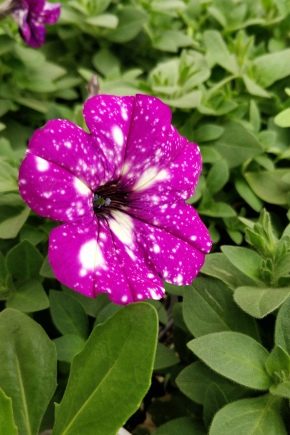
Low-growing bush petunia is a very popular plant that flower growers love. The best varieties of a compact flower can be of different sizes, tones, shapes. Breeders do not stop trying to form new varieties and hybrids. Due to the variety of types, petunias can be planted in a flowerpot or in a pot, used as a decoration for a balcony, a summer residence, and other vertical landscaping.
Petunia is often used to decorate alleys and flower beds. It blooms for a long time, does not require complex care. There are three types of petunias: cascading, ampelous and bush.
Description
It is bush petunia that is considered the most common type of this group. She comes from the South American tropics. The main features are the colorfulness of flowering, a huge number of varieties and subspecies. She is an annual plant.
Bush petunia features:
- shoots are green, round type;
- shallow root system;
- erect stem;
- shoots and foliage are covered with pile;
- all varieties have large flowers, their diameter is at least 10 cm;
- the inflorescence combines two flowers similar to a funnel, the peduncle has a short length;
- borders and transitions of color are gradient, soft;
- the edges of the flowers can be completely different: wavy, corrugated, even, carnation;
- the richest color scheme: snow-white petunias, black, purple, purple, pink are often found;
- bright colors can have inclusions of both similar and contrasting shades, edges;
- after the flower has faded, a seed capsule is formed.
Petunia is one of the most unpretentious plants that grows well both in dry heat and in prolonged rains and even mild cold weather. These plants do not require the formation of a bush - it is enough to correctly plant, pinch and prune.
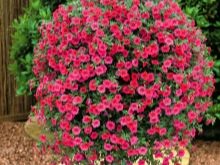

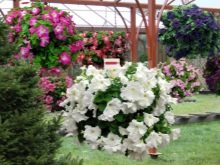
Views
The variety of spray petunias is amazing: thanks to the richest color palette and unpretentious care, this flower is a real favorite of Russian flower growers. They highlight the popular bush varieties, which are described below.
Daddy
Differs in large inflorescences, flowering is abundant. The bush usually does not exceed a height of 25 cm. It is quite resistant to bad weather, therefore it is very popular among Russian flower growers. The variety perfectly tolerates draft, rain and drought. Ideally develops under diffused light.
With the help of this variety, you can decorate any containers, summer cottages and balconies. The color scheme is diverse - it can be blue, white, deep pink and scarlet.
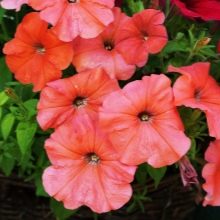
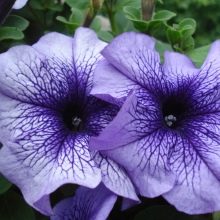
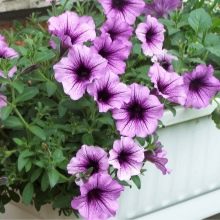
Pikoti
Flowering has a large developmental variant with different shades. The petals are distinguished by a white border. This option is quite unpretentious to climatic conditions, calmly withstands high humidity, rains.
The height of this variety reaches about 25 cm. Picoti blooms throughout the summer and warm autumn. Can be grown in different containers.
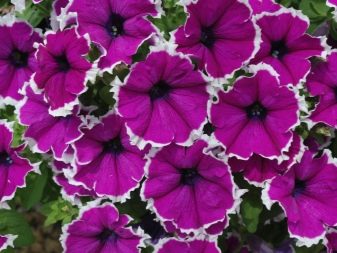
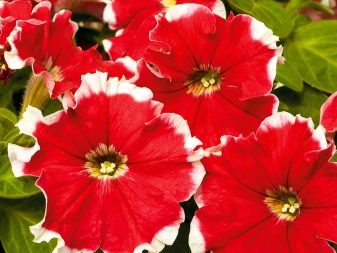
Storm
This variety is not afraid of strong wind and moisture, therefore it feels perfect on the street, but requires planting in nutrient soil. Inflorescences are round, large type. Plants are resistant to various diseases, such as gray mold. Lingering rains will not be a hindrance to him.
The bush is tall - up to 35 cm. The color range includes white, purple, blue and red flowers.
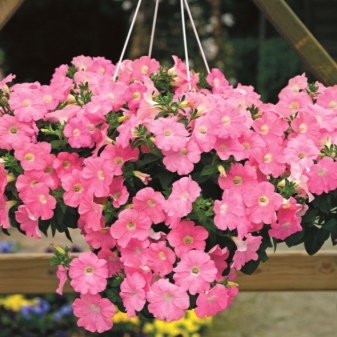

Polaris
This type of plant will perfectly withstand various climatic troubles. Flowering begins very early and continues until cold weather. The bush reaches a height of 30 cm. It grows well both in the open field and in pots, baskets.
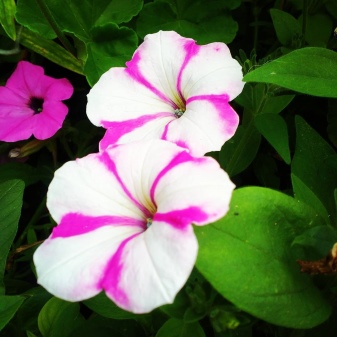
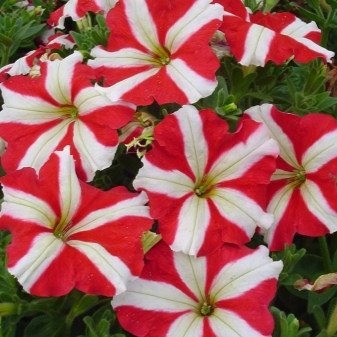
Ultra
These are rather wide and tall bushes, decorated with large and expressive flowers, which are distinguished by a chic opening and an original wavy edge. It is a fairly strong, resistant plant that thrives very well in all weather conditions.
This variety is ideal for decorating large flower beds and flower beds.
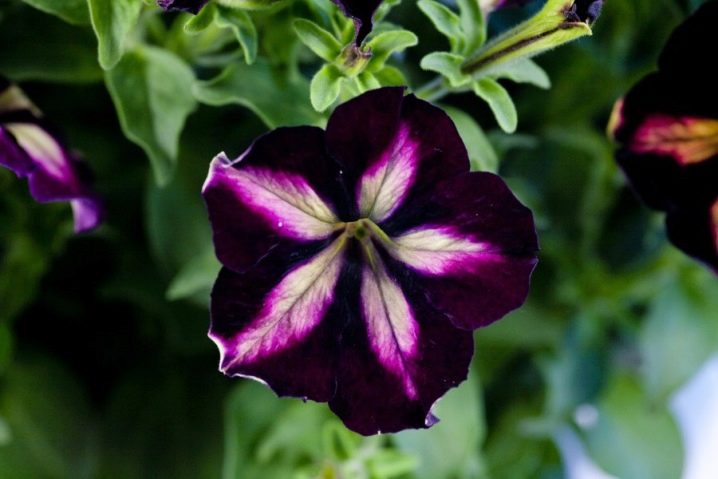
Dreamms
This variety is large-flowered hybrid. It is quite compact in size, has a rich development of branches. The height of the stem can reach 40 cm, the diameter of the flowering is 13 cm.
The variety is endowed with a pronounced aroma, blooms very profusely with red funnels. Drimms is used in all types of landscaping, as it is completely unpretentious. It gets along well with other flowers in the flower bed.
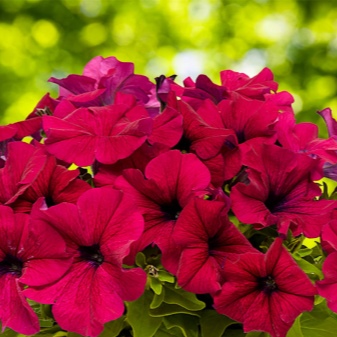
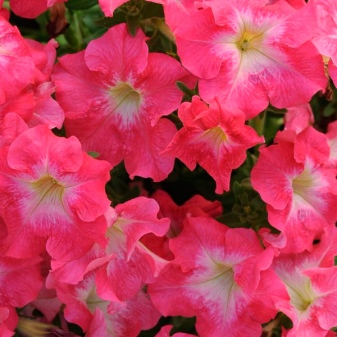
Fantasy
The flowers of this variety have a wave-like shape, bright, with a wide variety of colors. They differ from other varieties in the duration of the decorative appearance, in a short development period, in durability.

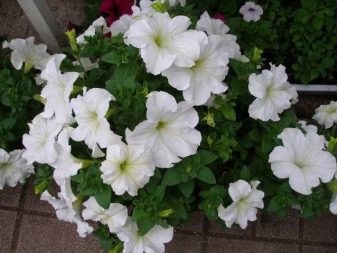
Hit parade
It is a very neat plant, decorated with small leaves, with a flowering that forms very early. The color scheme ranges from pale lavender to purple-blue.
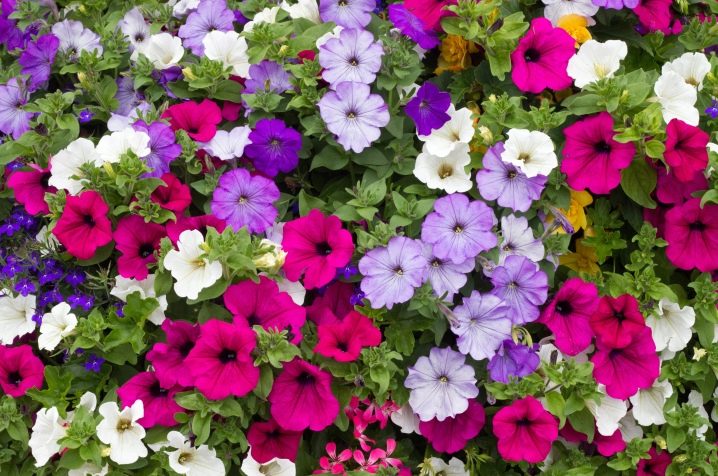
Titanium
Differs in erect bushes with dense branching and compact size. The bush does not exceed 45 cm in diameter, and reaches a height of about a quarter of a meter. This species has light, large oval leaves. The flowers are endowed with a pinkish color and fringe along the edges. In the middle, the inflorescence has a light beige tint.
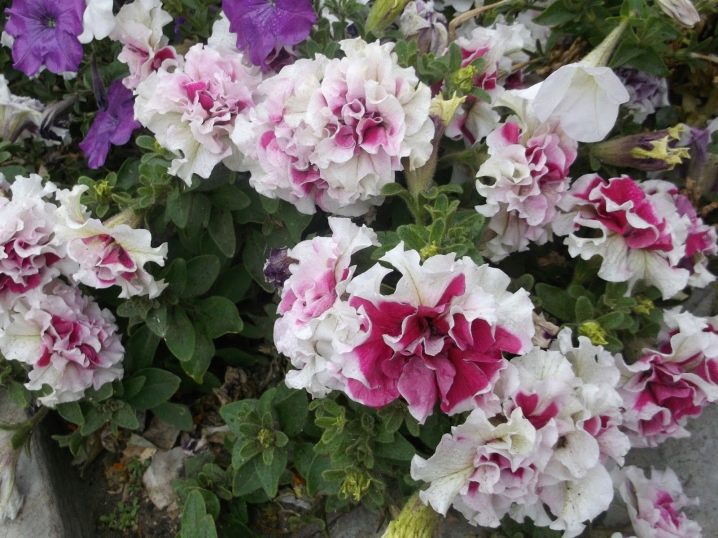
Triumph
This is a very beautiful variety, very large flowering - up to 16 cm in diameter. The petals are of the type of corrugation in the edging and all kinds of shades of pink palette. In the center, the flowers are darkened, and the petals are striped. The variety is quite sensitive to prolonged torrential rains.

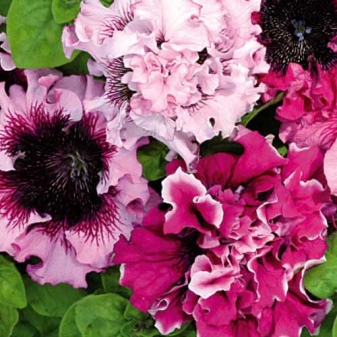
Limbo
This is a low-growing bush, no more than 20 cm in height, but the flowering is rather large - at least 12 cm. This variety is distinguished by early flowering, multicolor, and resistance to bad weather. The color palette is wide - it is peach, and purple, and delicate rose, as well as silver, purple and white.
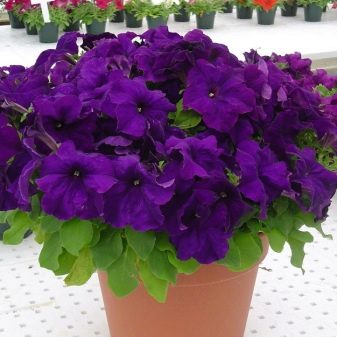
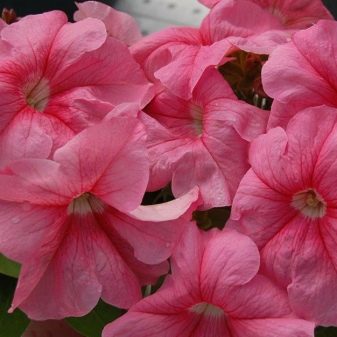
How to plant?
Despite the unpretentiousness of the plant, its planting has certain features, which need to be considered:
- when calculating how many plants can be placed in a particular container (pot, box or pots), one should proceed from the following rule: dishes with a diameter of 22 cm can accommodate no more than two mature bushes;
- light soil is preferred - sand and peat can be added;
- petunia is planted in small-sized containers: pots, baskets, hanging boxes;
- before planting a plant, the soil is moistened;
- seeds are laid out on top of the soil, then sprinkled with earth;
- you can water the flower from a spray bottle with water that has settled;
- in order for the seeds to sprout faster, it is necessary to create a greenhouse effect and cover the container with polyethylene, but they need to be ventilated every day;
- sprouts will appear within a week - after that, the film can be opened for long periods;
- when foliage appears, the plant should be fed, after which it is necessary to repeat the procedure once a week;
- after the formation of flowers, they can be planted in permanent containers or open ground.
It is very important to choose the right soil for your bush petunia. Ideal soil has a clay or sandy appearance, it absorbs moisture well. It should be loose, lightweight. You can mix part of the sod or leafy soil, part of the peat and part of the sand.
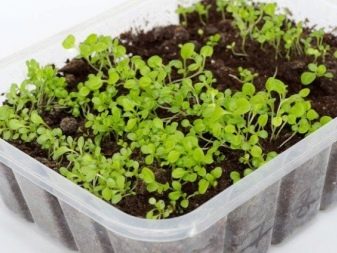
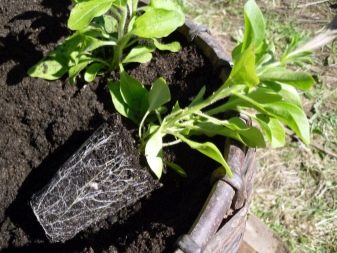
The seedlings of the flower are moistened gently, under the root - it is better to do this with a syringe. An adult plant is watered in the evening twice a week after the top layer of the soil has dried.
When choosing a place for planting petunias, it is better to stay in an area that is sufficiently lit, since the plant loves light very much. If planted in the shade, it will grow, but it will develop more slowly, forming more foliage and less flowering.
In order for the bush to have a spectacular decorative appearance, even when growing seedlings, you need to pinch it - this will create a beautiful compact branching. Also, thanks to this method, the flowering will be more abundant. Florists recommend pinching over the fourth or fifth leaf of the shoot in the center.
Nuances
Usually, petunia can, with improper care, fail in development:
- if the flowering is not abundant, and the stems are elongated, then the flower does not have enough lighting or it is cold;
- you need to remove dried flowers in time;
- if petunia was struck by a fungal disease, then most likely humus was used for feeding.
See below for the varieties and best varieties of petunias.







































































































The comment was sent successfully.